◊ Art and Design in New Economies: Speculative Scenarios for Real-life Innovations
Deanna Herst
Economic Paradigm Shifts: A Possible Role for Art and Design Education
The current economic and industrial landscape is transforming rapidly. On a daily basis new products, services, platforms, and markets are emerging, fused by technological innovations and digitalisation, and increasingly driven by consumers, citizens, and communities. There are many perspectives on this landscape in flux, such as the so-called sharing economy (Benkler 2004), the horizontal economy, or the Next Economy (Rifkin 2017).1
These concepts redefine traditional models of production, transaction, distribution, and, accordingly, authorship and ownership. In today’s economic spectrum we can see an emergence of initiatives that express a bottom-up or DIY/DIWO mentality and a shift from mass production to markets of one. The maker culture, for example, fosters collaborations between amateurs and professionals through networks and accessible, high-end technologies (FabLabs, maker spaces) to create new markets for specific communities and individuals. According to the ideology of ‘free innovation’, consumers develop innovations themselves and give them away for free (Von Hippel 2017). ‘Jugaad innovation’ is based upon frugal innovation from emerging communities in countries like India, China, and Africa. This method has meanwhile been developed into a strategy for mainstream innovation (Radjou et al. 2012). These practices show that what has traditionally been perceived as innovation (a top-down, highly structured process) is changing into a more unruly, bottom-up, and inclusive way of developing new products.
In this transforming economic and industrial environment, the traditional hierarchies between industries, companies, producers, designers, and consumers are radically changing. This paradigm shift transforms the way we design, what we design, and for whom.
How can art and design education equip students for this transforming socio-economic environment? Which indispensable skills and attitudes enable them to respond to an economic culture of digitalisation, bottom-up initiatives, inclusive innovation, markets of one, and ever-emerging technologies?
Next Economy, Next Design?
Willem de Kooning Academy’s Commercial Practice programme explores and questions the aforementioned developments and investigates their relevance for art and design students. Its point of departure is the paradigm shift in hierarchies and the way in which this affects future modes of production and consumption, markets, consumers, and, accordingly, the future practices of designers and artists.
To equip students for these ‘next’ economic scenarios, the programme proposes a form of ‘next design’ aimed at future commercial contexts that are driven by people, not mass markets. One of the objectives is to enable art and design students to position themselves as creative practitioners towards the strategic use of design in current managerial perspectives, expressed in, for example, design thinking.
Hence, in relating to current economic transformations, the programme specifically departs from methods that originate in aesthetics, imagination, and critical reflection. For example, students conduct provocative design research for innovative products, explore participatory ways of storytelling through online platforms in data design, question traditional market research aimed at masses instead of individuals in branding, and design experiences, services, and interactions for and with consumers, citizens, and other stakeholders for future markets.
Speculative Scenarios
for Real-Life Innovations
One of the perspectives in the programme includes the relation between speculation, innovation, and consumers in real life. Speculation is investigated as a creative approach to achieve imaginative and more extreme forms of innovation. It relates to the field of speculative design as defined by Anthony Dunne and Fiona Raby (Dunne & Raby 2011). Their ‘what if’ scenarios propose radical narratives for possible, often imaginary futures. As such, speculative design is positioned as design for debate rather than design for reality.
But what if this future increasingly involves emancipated consumers and citizens? Within this context we investigate how speculative, sometimes radical concepts and designs can be connected to the real world. Therefore, we do not address speculation in isolation as an expression of authorship or as design for debate, but rather connected to ‘real-life’ innovations in an exchange process with ‘real people’. As a possible perspective, we expanded the ‘what if’ scenario with the question ‘how else’, relating to Ahmed Ansari’s inclusive view on design: ‘“How else” emphasises a connection to current systems and structures where the principle project is framed not as an aesthetic, exploratory, intellectual exercise, but as a political, transformative, active enterprise’ (Ansari 2015).
Integrating speculation and real life, the ‘what if / how else’ approach aims at challenging students to both experiment with a radical speculative attitude and to exchange their concepts in reality. Through this scenario we intend to encourage inclusive and potentially more valuable innovations with prospective consumers.
From ‘What If’ to ‘How Else’
To arrive at the realistic ‘how else’ as a ‘transformative enterprise’ (Ansari 2015) from the speculative ‘what if’, the role of design research with users and consumers is crucial. The design research we introduced in the programme focuses on developing creative, critical ways of conducting user and consumer research. As opposed to the anonymous data- and fact-driven market or user research, art and design students are able to use their unique artistic skills and imagination to unveil the personal stories, desires, dreams, or fears of users as input for more profound and valuable designs (Sanders & Stappers 2012).
An example is the ‘Confrontation Piece’, a design research approach aimed at user engagement. It is derived from the cultural probe (Gaver, Pacenti & Dunne, 1999), a method developed for interaction design: ‘a technique used to inspire ideas in a design process… a means of gathering data about people’s lives, values, thoughts. Probes can be any sort of artefact (map, postcard, camera, object, diary, etc.) along with evocative tasks, which are given to participants to allow them to record specific events, feelings or interactions.’
The Confrontation Piece is a less directly applied interpretation of the Cultural Probe. It encourages students to elicit stories from possible future consumers. In this process, they confront consumers with their concepts using tactics such as unexpected interventions or (un)familiar objects and visuals, in order to get less predictable, less factual feedback.
For the assignment ‘Secret Stories about Hidden Local Crafts’ in Rotterdam-West, students used the Confrontation Piece to collect stories from craftspeople. One project focused on forgotten weaving techniques. As an intervention, students installed a public loom of extreme dimensions at the local market. A provocative form was used to incite specific stories about weaving from the neighbourhood.
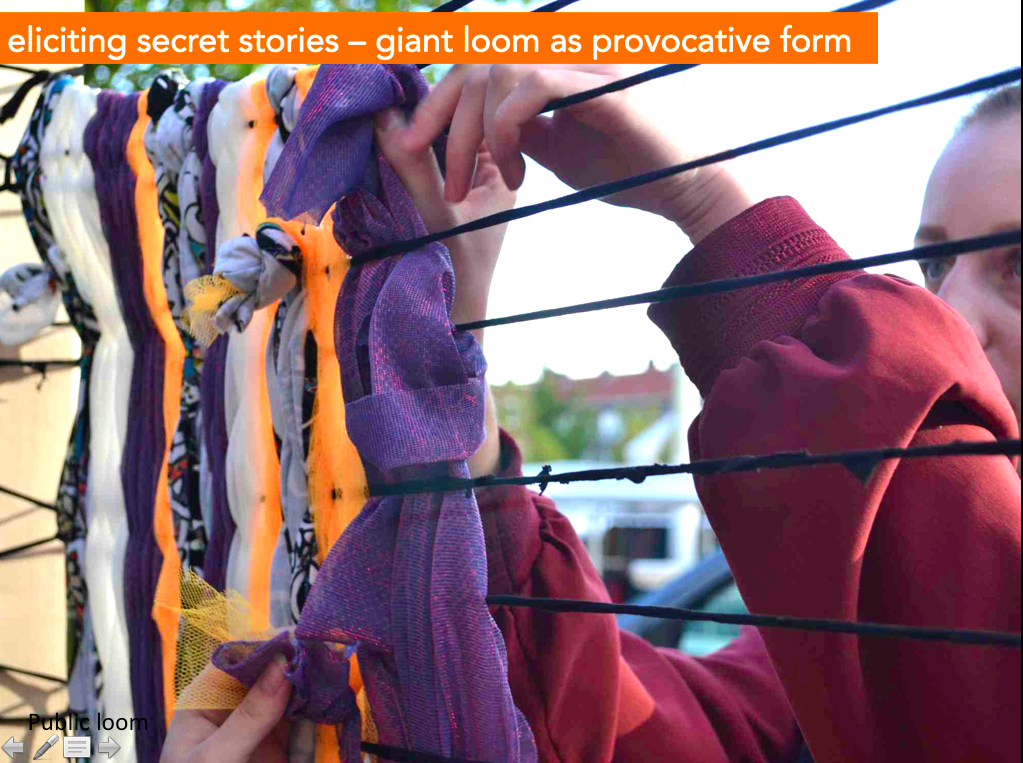
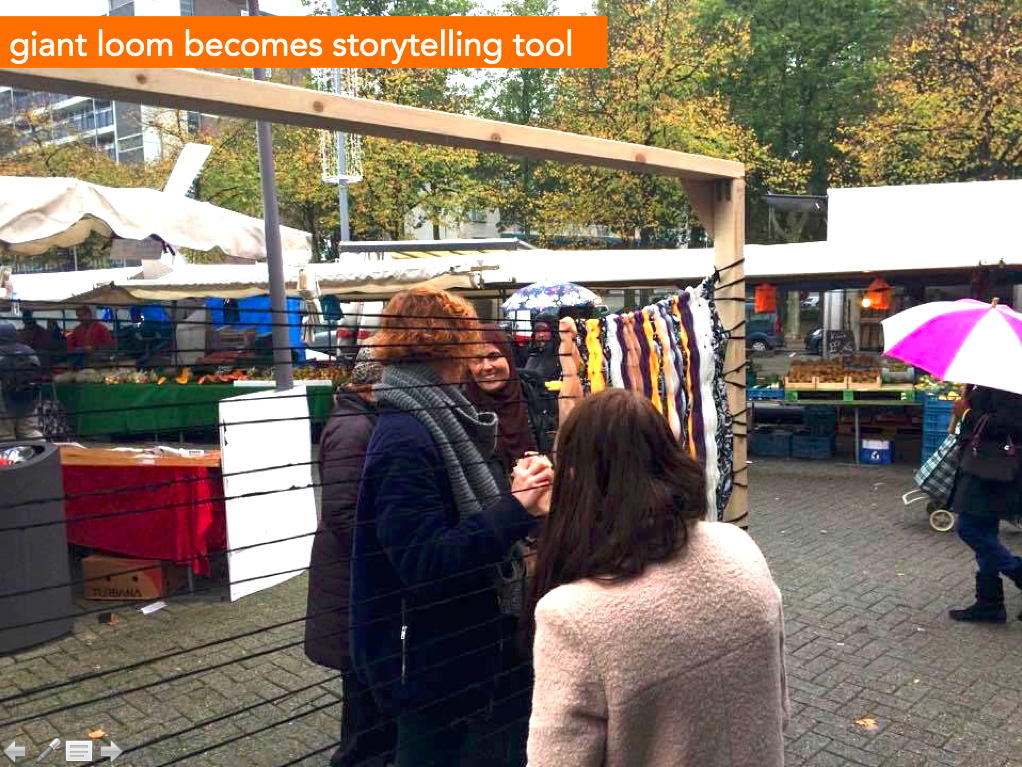
The giant loom succeeded as gathering place for collecting narratives. However, the stories did not only relate to weaving but much more to the daily lives of local people. This unexpected outcome changed the function of the final design. Based upon the responses the loom became a new product—a public storytelling tool.
In the project ‘Memre’ (‘memory’ in Surinamese), another student intended to discover secret stories about forgotten Surinamese crafts. He interviewed people using items like kernels, shells, and wood, mementos from their past in Suriname. His ‘Confrontation Piece’ eventually became an incentive for deeper storytelling. The responses inspired him to make a new product for this community, a memento kit that included an empty book for collecting personal histories.
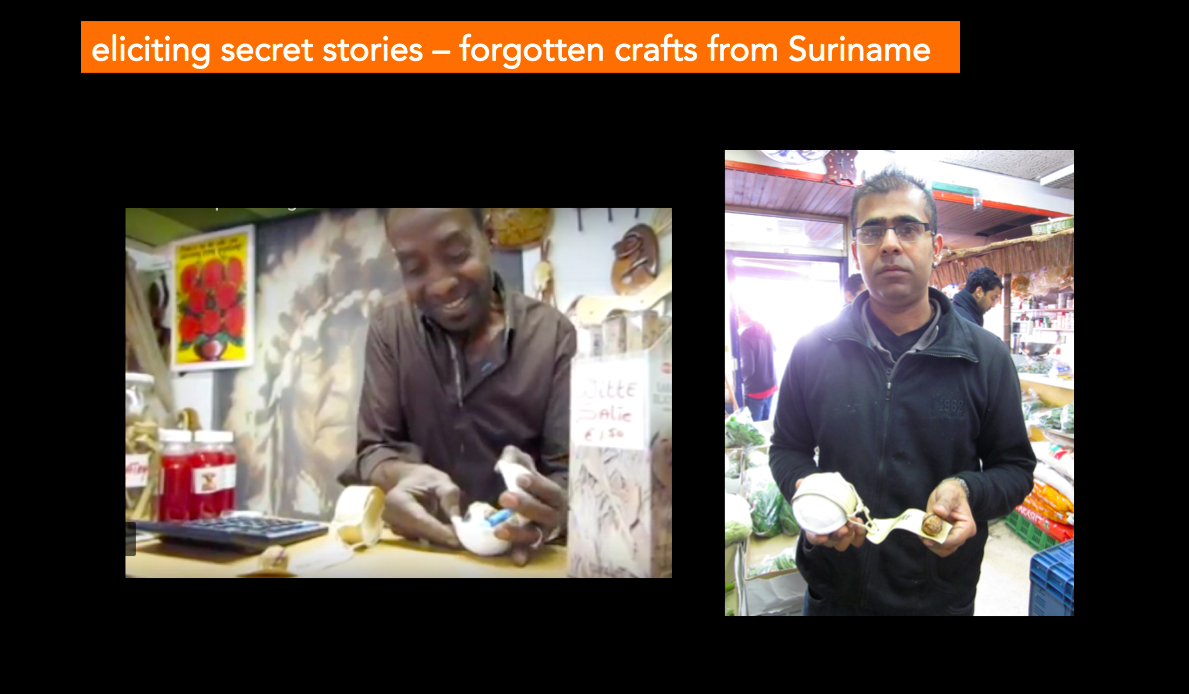
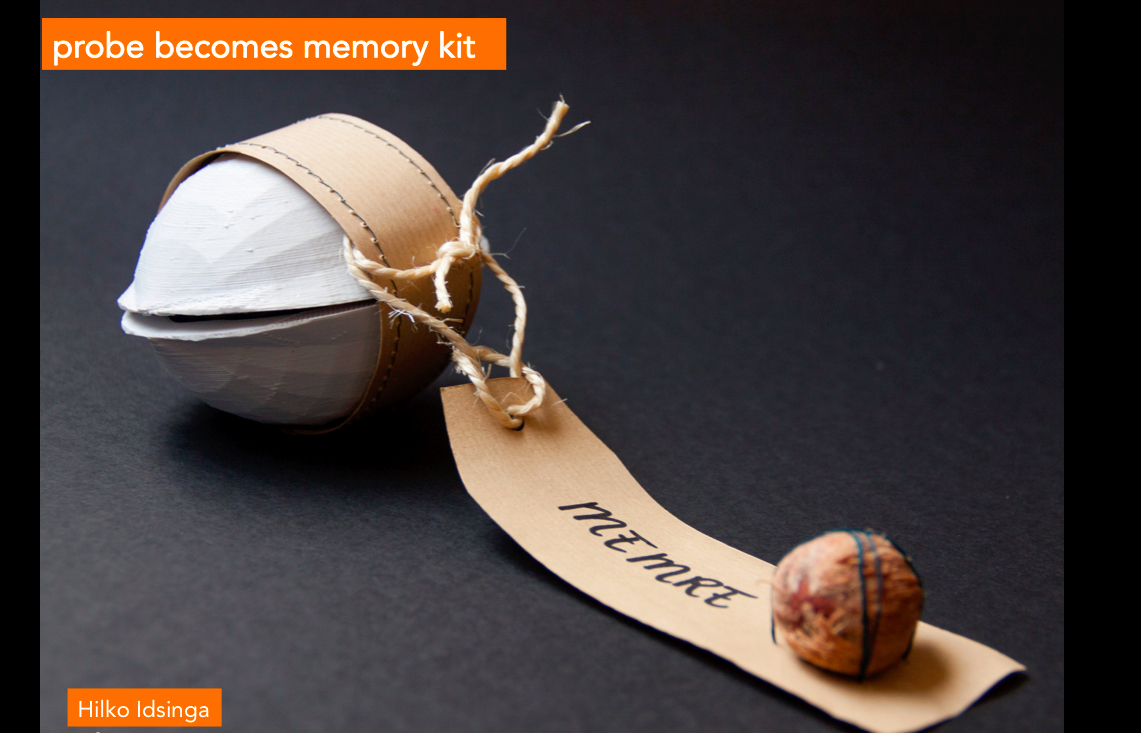
By allowing the ‘how else’ to the design process, the Confrontation Pieces resulted in unexpected outcomes that reflected the stories of the people involved. Their feedback was used to create innovative products that did not yet exist. The process showed how a less strictly defined form of research into unknown needs could be used as a strategy for inclusive innovations and new, specific markets.
From Probe to Provocation
Working with the Confrontation Piece provided valuable information about the process of designing a new product as the result of personal, intimate user feedback. Based upon the possible potential of this inclusive design process, we decided to expand the spectrum of the cultural probe from the ‘how else’ user-oriented Confrontation Piece to a more extreme ‘what if’ artistic approach: the ‘Provocation Piece’. This research intervention focuses on testing radical scenarios in real life through a provocative design, in order to receive feedback about consumers’ desires, dreams, or fears. In the Provocation Piece, the speculative ‘what if’ merges with the realistic ‘how else’.
The Provocation Piece was introduced in a course that focused on the design of a future ‘Internet of Things’ product. Students developed several design research interventions, varying from role-play and disguises to presenting alienating objects to the people involved. The project ‘Itranscom’ focused on future care. What if we could get access to the thoughts of people who cannot communicate anymore, for example, because of dementia? For this purpose, the student proposed a data transmission system, represented by a small, round, flickering electronic object. Testing the ‘how else’, she used her alienating prototype in interviews with possible patients and caretakers. Her object incited profound conversations about life and death, providing her with new insights. An important outcome was the fear of privacy, which she eventually embedded into her final design concept.
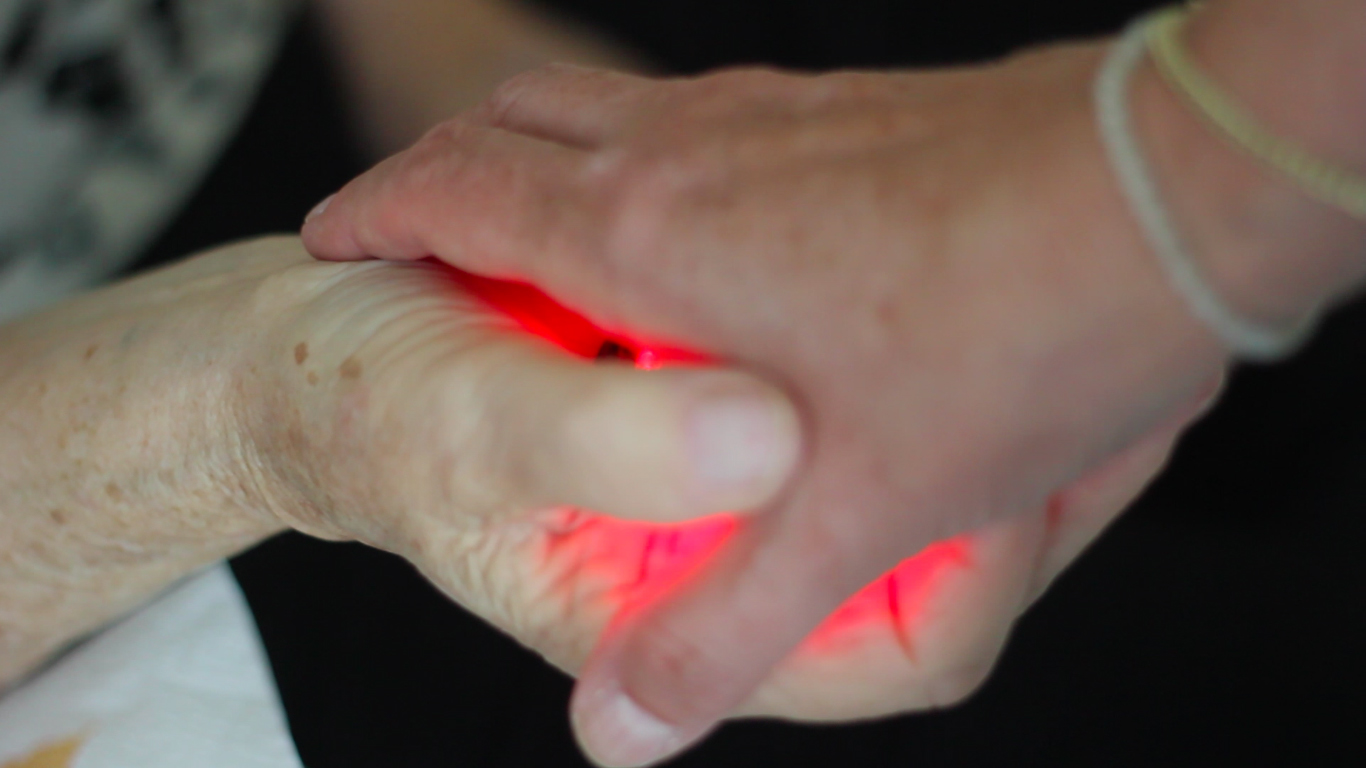
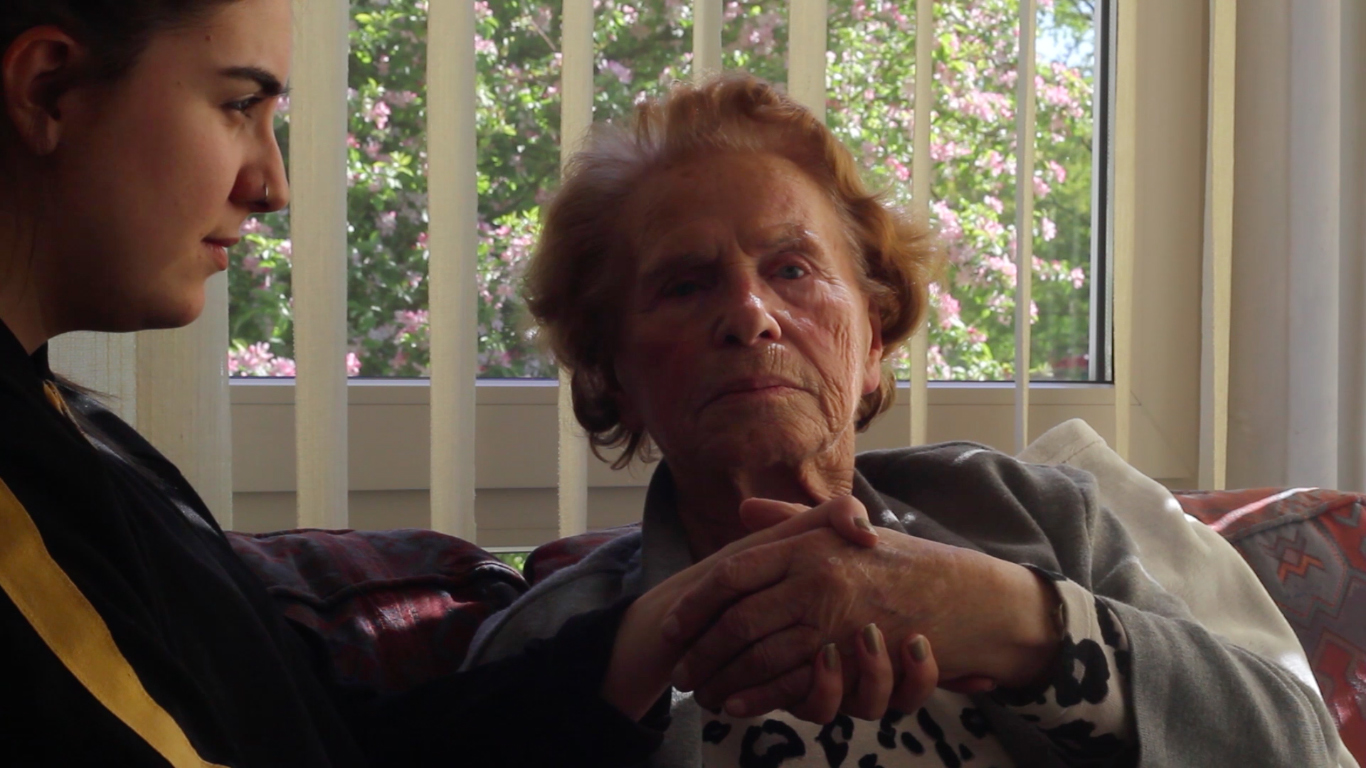
‘Real-Life Terra Fictions’ was another assignment in which students explored the Provocation Piece. The course required a design for future landscapes and unknown territories and challenged students to make these extreme scenarios real for possible consumers.
The project ‘Re-embodiment of Human Treasures’ focused on a selected group of one hundred people who were nominated for a trip to Mars. The students used a provocative question: which earthly objects would they miss on Mars and how would they reproduce these with local Martian resources? To collect feedback they designed a kit containing a letter, together with pictures and objects of sentimental value. One Mars nominee returned the kit, including objects like a shell, a pinecone, and a violin, as well as a promise to collaborate in the project. By intertwining their ‘what if’ speculations and the Mars nominee’s ‘how else’ reality, the students were able to relate ‘terra fiction’ to real-life ‘terra facts’.
Unruly Speculations
The projects and methods described above show a possible approach in art and design education towards a transforming economic environment. We focused on the current shift in hierarchies between producers and consumers and the emerging bottom-up, participatory attitude from consumers and users. Taking into account the aesthetic context, authorship, and artistic capacities of the students, as well as the stories and needs from consumers and users, we intended to develop a design research approach that connects radical speculation with real-life scenarios. The examples show that students came up with imaginative, innovative, and not-yet existing products designed with and for their prospective consumers. However, there was a recurring main issue: establishing contact and collaboration with the people involved. This leads to the question of how we could further develop the “what if/how else” scenario to enable students to make speculative ideas relevant for real life innovations.
A case that might provide some insights is the project Human Unification Base (HUB). It is an initiative of interaction designer Eric Groot Kormelink, who has been a wheelchair user since birth. HUB focuses on a group that is currently underrepresented in the industry: people with disabilities. The project encourages self-design and self-fabrication by questioning existing healthcare devices from an individual perspective, as an alternative form of innovation.
To achieve this, we propose open design and DIY/DIWO through interdisciplinary collaborations with makers, designers, artists, engineers, care and other professionals. The core of HUB is an open lab, a workspace where these parties collaborate and test prototypes in situ with the people involved.
As a design approach, HUB proposes the interconnection between these open design principles and the speculative imaginary. In general, the most urgent ergonomic needs of people with disabilities are solved by the industry, like wheelchairs or prostheses. But to unravel the real questions behind these readymade solutions we also need to investigate individual, tacit and non-explicit requirements of people with disabilities. Some of their dreams, fears or desires are already embodied by projects like flying wheelchairs, steampunk leg prostheses or Lego robot arms. These are but a few examples that show personal imagination related to needs, going beyond the universal industrial ergonomic.
To find out what these unexpressed needs and desires are, we investigate the possible role of the aesthetic: the speculative, the imaginary or even the provocative. Elaborating on the earlier mentioned participatory research methods, like the Confrontation Piece and Provocation Piece, we look at speculation in real life, provocation to incite storytelling, open-ended forms of products to encourage individual adaptations and personal scenarios for unimaginable future innovations. Some scenarios include:
The Poetics of Use: using different forms of narration to discover personal narratives, memories and other personal responses to everyday life devices.
Stories of the Senses: investigating the role of the senses and sensory feedback on products. Which tactile, olfactory, auditory or taste related sensations are missed in everyday life products? For example, some people need straws to drink beverages, how could the experience of different drinks be enhanced through the structures of the straws?
Imaginary Interactions with (Technical) Things: an autopsy of inaccessible devices for people with disabilities. Which unintended gestures or habits do these discouraging devices generate? One case showed a redesign of a guitar with a more intuitive interface for a person with limited manual control.
By addressing the imaginary in these speculative approaches, we encourage unpredictable innovations that result from real life interactions with and are mostly instigated by the individuals involved. The outcomes might be products or add-ons that are quirky, unfamiliar or unusual but nevertheless reveal non-standard preferences. We want to explore how these unruly parameters from an underrepresented group could be developed into future standards for (self) health care innovation. Within this context, our future objective is to develop prototypes into real products, as innovative, personal alternatives to the health industry, and to discover new markets for them.
How Else?
So how could we further develop the ‘what if / how else’ scenario in order to enable students to bring speculative ideas to real life? The “how else” in HUB includes focusing on new (underrepresented) groups, reversing roles between designer and user and addressing individual needs beyond the usual ergonomic, in order to make speculation real for the people involved. “How else” also implies an inclusive approach to innovation, in which the speculative imaginary and the critical participatory are merged.
Hence, we propose open, interdisciplinary in situ workspaces that implement the ‘real world’ in the educational context. These public field labs facilitate students’ research, experiments, and collaborations on urgent future questions together with engineers, scientists, industries, local initiatives, and, not least, audiences, consumers and users as fundamental stakeholders in innovation. As such, these labs can expose students to real life issues and the people involved, and, at the same time, show their distinctive position as creative practitioners, collaborators, shape shifters, and critical innovators to an economic field that is in flux.
Works Cited
Ansari, Ahmed. ‘Design Must Fill Current Human Needs Before Imagining New Futures’, MIT Media Lab Summit, July, 2015.
Benkler, Yochai. Sharing Nicely: On Shareable Goods and the Emergence of Sharing as a Modality of Economic Production. Yale LJ, 114 (2004), p. 273.
Dunne, Anthony, & Raby, Fiona. ‘What if…’. The First Beijing International Design Triennial. Beijing, 2011, pp. 233–85.
Gaver, Bill, Dunne, Tony, & Pacenti, Elena. ‘Design: Cultural Probes’, Interactions, 6(1) 1999, 21–29.
Von Hippel, Eric. Free Innovation: How Citizens Create and Share Innovation. Cambridge, MA: MIT Press, 2017.
Radjou, Navi., Prabhu, Jaideep, & Ahuja, Simone. Jugaad Innovation: Think Frugal, Be Flexible, Generate Breakthrough Growth. New York: John Wiley & Sons 2012.
Rifkin, Jeremy. ‘The Third Industrial Revolution: How the Internet, Green Electricity, and 3-D Printing are Ushering in a Sustainable Era of Distributed Capitalism’. World Financial Review, 1 (March/April 2012).
Sanders, E. B. N., & Stappers, P. J. Convivial Toolbox: Generative Research for the Front End of Design. Amsterdam: BIS, 2012.
List of Images
1. Open Design students Maud Claessens and Anke Wilnkelmolen testing the loom in a market in Rotterdam-West.
2. Open Design students Maud Claessens and Anke Wilnkelmolen testing the loom in a market in Rotterdam-West.
3. Open Design student Hilko Idsinga interviewing the community for his project ‘Memre’. Retrieved from opendesignwdka.wordpress.com/projecten/
4. Hilko Idsinga, ‘Memre’. Open Design project. Retrieved from opendesignwdka.wordpress.com/projecten/
5. ‘Itranscom’ a project by New Frontiers' student Zoï Pahtalias.
6. ‘Itranscom’ a project by New Frontiers' student Zoï Pahtalias.
Rifkin’s views on the Next Economy can also be found in Roadmap Next Economy, Rotterdam, 2017, https://mrdh.nl/rne-naslag.
↩︎